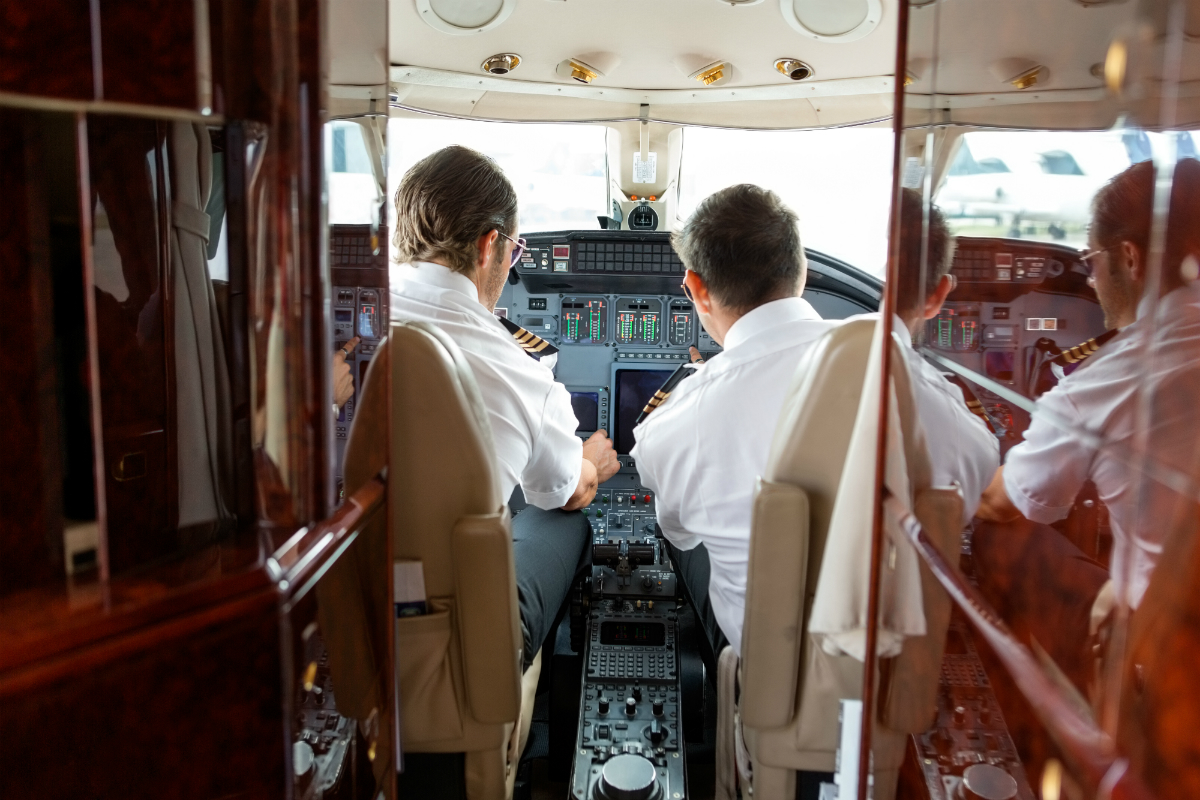The Aviation Glossary Every Private Jet Passenger Needs
02/11/2016
The
aviation industry has their own language when it comes to communicating about
the flight and what surrounds it. Sure we all know basic terms like Aircraft
and Terminal, but there are plenty none of us have ever heard of. We have taken
upon the responsibility to list the terms we thought were most interesting and
relevant to passengers and `A.V. enthusiasts` in the Aviation Glossary below. Next time you’re on a private jet flight,
you can listen in to your jet pilots` conversations and understand a few terms,
maybe even share your newly acquired knowledge with the other passengers.

- ABSOLUTE ALTITUDE - The measurable height of an aircraft above the actual terrain.
- AIR CARGO - Cargo that is moved using airplanes.
- ATC – Air Traffic Control.
- AIRPORT - A location where aircrafts take off and land.
- AIRPORT TRAFFIC CONTROL TOWER (ATCT) - A terminal facility that uses air/ground communications, visual signaling, and other devices to provide ATC services to aircrafts in the vicinity of an airport/
- AIRCRAFT - Vehicle used for flying.
- APRON - The hard-surfaced or paved area around a hangar.
- ARRIVAL AREA (Arrivals) - The area of the terminal used for airplanes coming to the airport.
- BAGGAGE AREA - The area of the airport terminal used for dealing with Baggage.
- BAGGAGE - Luggage and other items brought on the airplane by passengers.
- CAT - Clear-Air Turbulence.
- CAVU - Ceiling and Visibility Unlimited; ideal flying weather.
- CEILING - The maximum height above sea level in STANDARD AIR attainable by an aircraft under given conditions.
- CENTER - An Air Route Traffic Control Center (ARTCC).
- CONCESSIONS - Businesses often inside the airport terminal. These usually sell food, beverages or retail goods such as books, magazines or souvenirs to passengers.
- CONCOURSE - An open space for people to move around in an airport terminal.
- DEPARTURE AREA (Departures) - The area of the terminal for airplanes leaving the airport.
- DESTINATION - The place an aircraft is going to.
- Domestic flight - A flight that starts and ends in the same country.
- ETA - Estimated Time of Arrival.
- ETD - Estimated Time of Departure.
- FLAP - A movable, usually hinged AIRFOIL set in the trailing edge of an aircraft wing, designed to increase LIFT or DRAG, or used to slow an aircraft during landing.
- FLIGHT - This is the term for what a person takes when they fly. It can also be used in the name of the trip - She took Flight 213 to Atlanta.
- Gates - The areas on the concourse where passengers get on to the airplane
- GREEN LIGHT - Approval for landing.
- GULL-WING - Descriptive of wing in frontal view bent as the wing of a seagull; a distinctive shallow, inverted "V" shape
- HANGAR - A large building which can store airplanes.
- HIGH-SPEED STALL - Any stall made to occur at more than 1g.
- HUB - The central location an airline uses for its operations.
- INTERNATIONAL FLIGHT - A flight that starts in one country and ends in another country.
- JET AIRCRAFT - Aircraft that use jet engines to make them move.
- KNOT - One nautical mile, about 1.15 statute miles (6,080').
- LANDING - The act of an airplane returning to the ground.
- OVERSHOOT - To land beyond a runway or planned spot. Opposite of UNDERSHOOT.
- PILOT IN COMMAND (PiC) - The pilot responsible for the operation and safety of an aircraft during flight time.
- RUDDER - The movable part of a vertical airfoil which controls the YAW of an aircraft; the fixed part being the FIN.
- RUNWAY - The part of the airport where planes take off or land.
- SPOILER - A long, movable, narrow plate along the upper surface of an airplane wing used to reduce lift and increase drag by breaking the smoothness of the airflow.
- SQUAWK - A four-digit number dialed into his transponder by a pilot to identify his aircraft to air traffic controllers.
- STALL - Sudden loss of lift when the angle of attack increases to a point where the flow of air breaks away from a wing or airfoil, causing it to drop.
- TAKE-OFF - The act of an airplane leaving the ground.
- TARMAC - An airport surface paved with this substance, especially a runway or an APRON at a hangar.
- TERMINAL - The main building of an airport used by passengers and cargo.
- THRUST - The driving force of a propeller or the forward force produced in reaction to the gases expelled from a jet or rocket engine. Opposite of DRAG.
- TOWER - The tower in an airport is a building used for air traffic control.
- TRUE AIRSPEED - The speed of an aircraft along its flight path, in respect to the body of air (air mass) through which the aircraft is moving.
- TURBOPROP - An aircraft having a jet engine in which the energy of the jet operates a turbine that drives the propeller.
- V - Velocity, now used in defining air speeds.